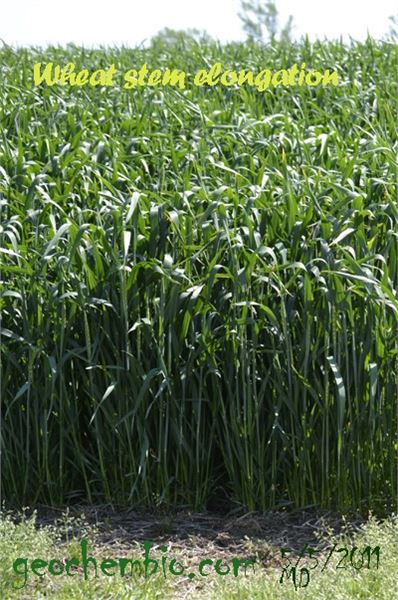Wheat Management – Stem Elongation

DR. ANTHONY OHMES
JACKSON, MO.
Stem elongation, initiated at jointing, indicates the increased demand for nitrogen fertilizer. It is critical to have adequate nitrogen in an available form for wheat during this phase of growth. It is critical to monitor wheat for nitrogen stress, especially if nitrogen was applied early in the year and/or soils are prone to leaching or denitrification. Wheat may respond to nitrogen applied up to the second node, described as Feekes 7. If possible, avoid nitrogen applications after these stages because typically by the time nitrogen is available to the plant it is a cosmetic response and there is risk of burning the upper leaves, in particular the flag leaf, described as Feekes 8 to 9.
Flag leaf (Feekes 9) health is critical, since it is the primary leaf for photosynthate production during head development (Feekes 10 to 11). Monitor plants closely following Feekes 8 for disease and insect pests. An early season disease that sometimes moves into our area is stripe rust. Also, monitor fields for insects, in particular true armyworm since this pest can rapidly defoliate flag leaves and clip heads.
For more information on wheat management during stem elongation contact your local MU Extension office and ask for IPM 1022 “Management of Soft Winter Wheat” or find it on the web at http://ipm.missouri.edu/pubs.htm. ∆
DR. ANTHONY OHMES: Agronomy Specialist, University of Missouri